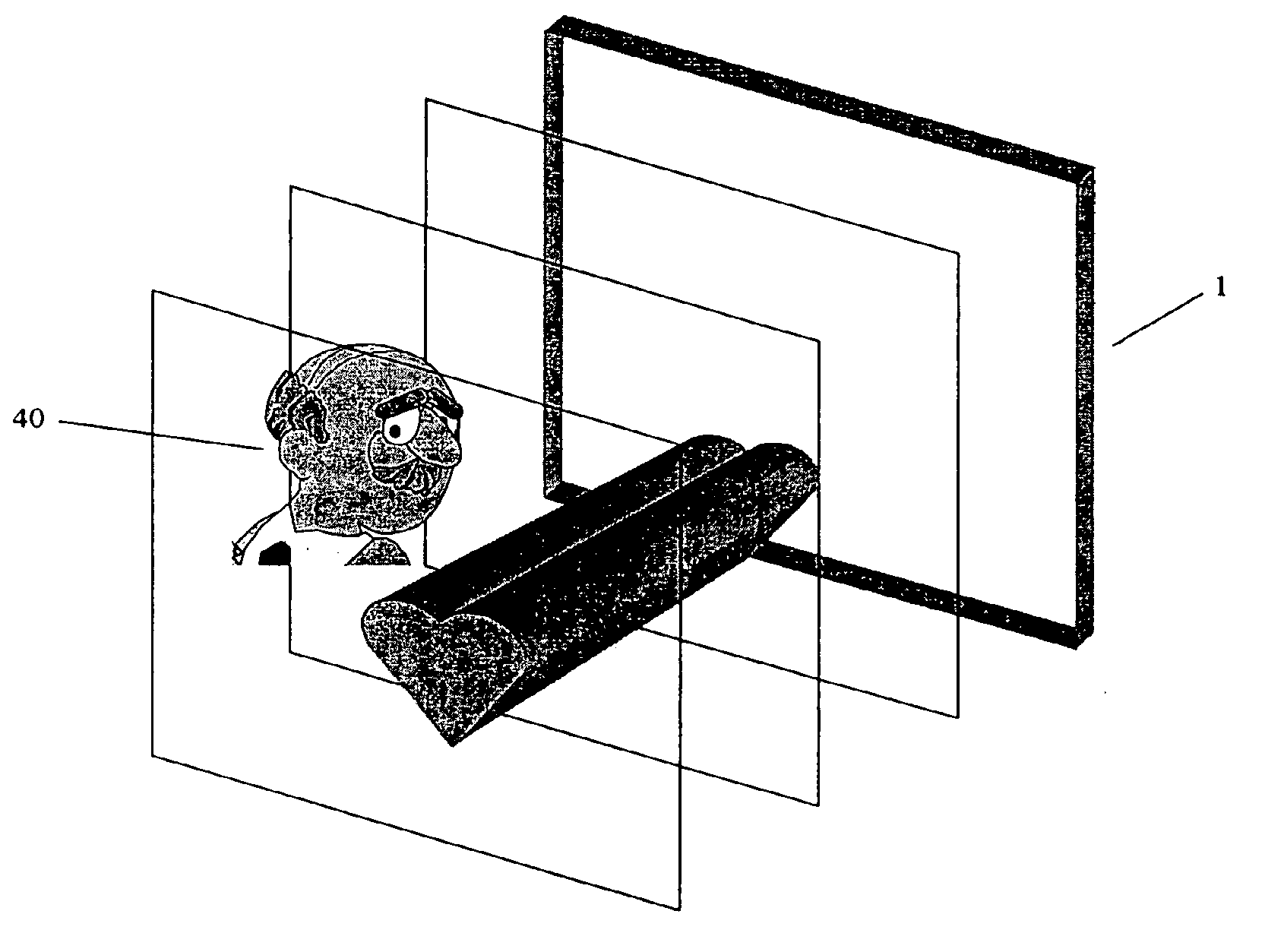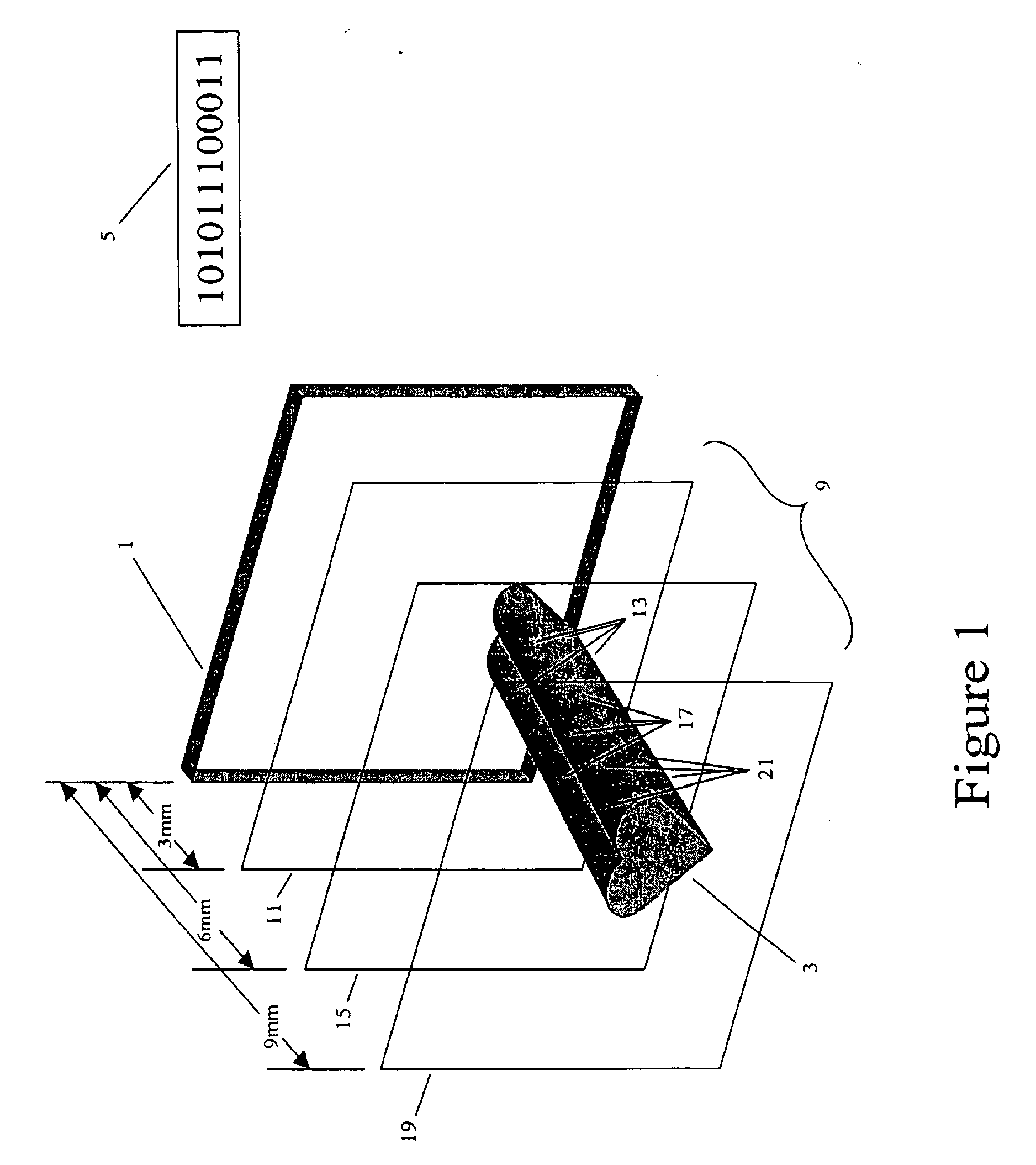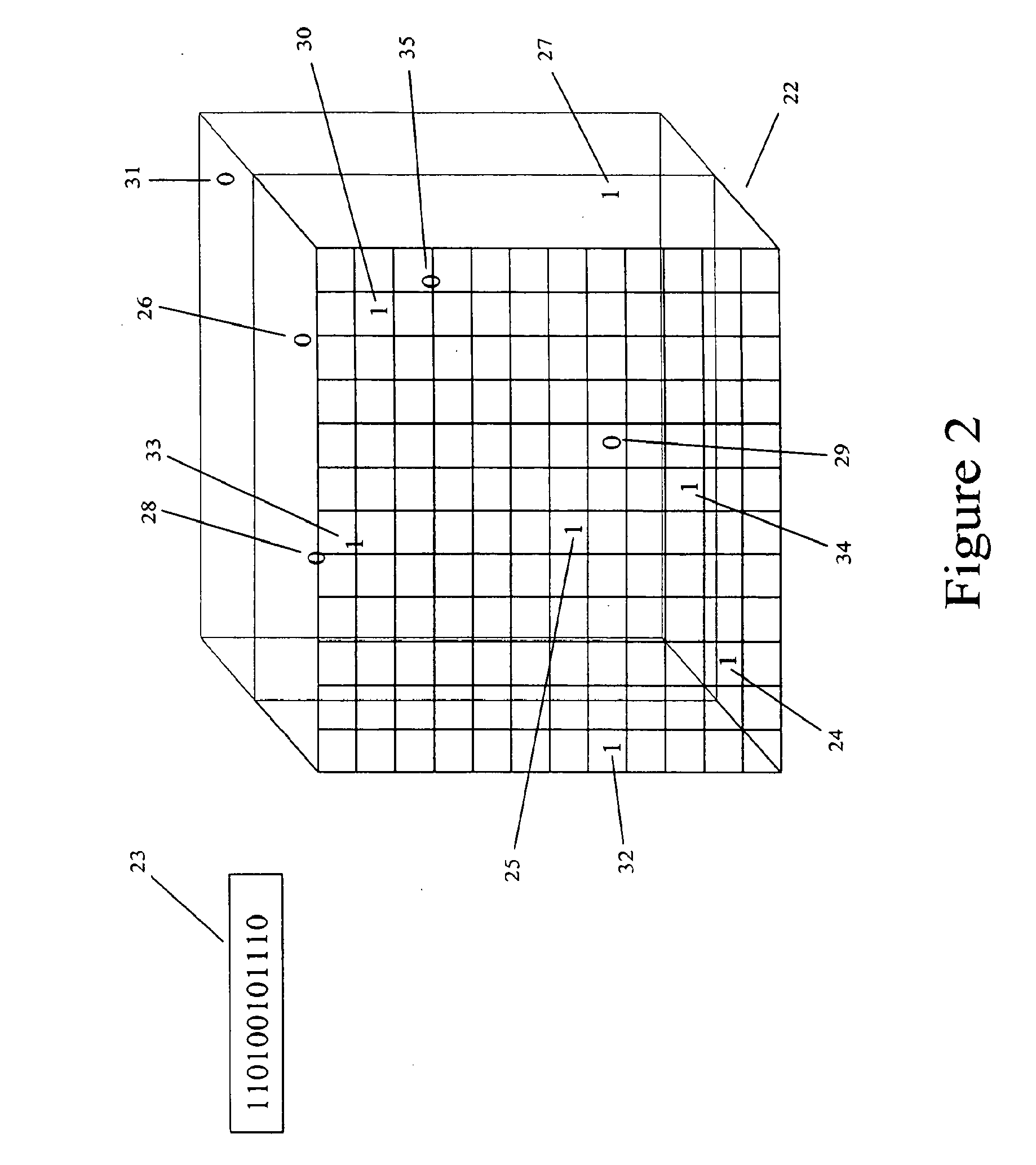Embedded information carrier for optical data
a technology of optical data and information carrier, applied in the field of holographic, diffractive and optically variable security features, can solve the problems of increasing the level of security, increasing the cost and effort of those trying to create forgeries or counterfeit items, and compromising the present use of holographic seals as security features, etc., and achieves the effect of not cost-effective reproduction
- Summary
- Abstract
- Description
- Claims
- Application Information
AI Technical Summary
Benefits of technology
Problems solved by technology
Method used
Image
Examples
Embodiment Construction
[0053] As shown in FIG. 1, the security hologram 1 includes information that when viewed or read for verification purposes, is presented as a three-dimensional image 3. The image 3 includes coded information 5 in a predetermined pattern. This coded information 5 is arranged in a predetermined pattern that will allow for varying levels of security. The predetermined pattern of the coded information 5 is arranged as a three-dimensional matrix 9. The three-dimensional matrix 9 includes information encompassing three discrete planes each located at a predetermined distance from the plane of the security hologram 1. The first plane 11 of the three-dimensional matrix 9 is located at approximately three millimeters from the surface of the security hologram 1. This first plane 11 includes only a first portion 13 of the coded information 5 stored in the security hologram 1 and alone is insufficient to establish a successful confirmation of security clearance identity verification. The second...
PUM
| Property | Measurement | Unit |
|---|---|---|
| angle | aaaaa | aaaaa |
| optical information | aaaaa | aaaaa |
| distance | aaaaa | aaaaa |
Abstract
Description
Claims
Application Information
 Login to View More
Login to View More - R&D
- Intellectual Property
- Life Sciences
- Materials
- Tech Scout
- Unparalleled Data Quality
- Higher Quality Content
- 60% Fewer Hallucinations
Browse by: Latest US Patents, China's latest patents, Technical Efficacy Thesaurus, Application Domain, Technology Topic, Popular Technical Reports.
© 2025 PatSnap. All rights reserved.Legal|Privacy policy|Modern Slavery Act Transparency Statement|Sitemap|About US| Contact US: help@patsnap.com



